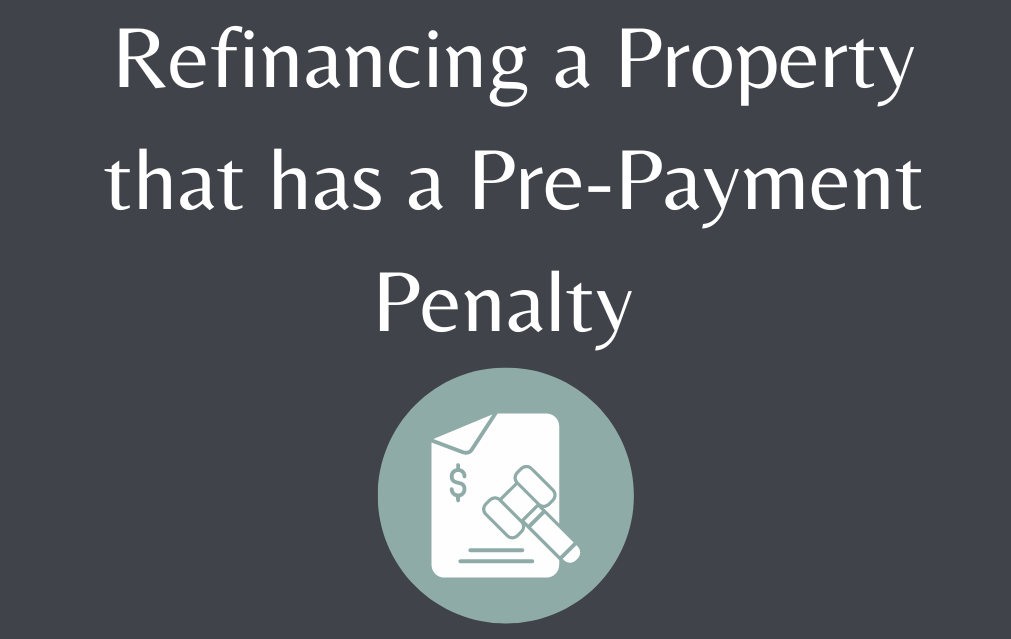Refinancing an investment property can be a smart financial move, potentially leading to lower interest rates, improved cash flow, or a change in loan terms. However, when faced with a prepayment penalty, property owners must carefully consider the timing and factors involved in making this decision. In this article, we will explore the best times to refinance an investment property with a prepayment penalty and the key considerations to keep in mind.
Understanding Prepayment Penalties: Prepayment penalties are fees imposed by lenders when borrowers pay off their loans before the agreed-upon term. While they can pose a challenge, understanding the terms and conditions of these penalties is crucial for making informed decisions about refinancing.
Evaluating Interest Rate Environment:
- Low-Interest Rate Environment:
- The best time to consider refinancing is often during a low-interest rate environment. If market rates are significantly lower than the interest rate on the existing loan, the potential savings may outweigh the cost of the prepayment penalty. Largely depending on loan size, ‘significant’ could be as little as .5% in rate reduction or less.
Monitoring Rate Trends:
- Regularly monitor interest rate trends to identify favorable periods for refinancing. Engage with financial experts or utilize online tools to stay informed about changes in the market. But don’t forget to look at the event holistically. You must consider all aspects, pros and cons of the refinance. NOT JUST THE RATE.
Consideration of Loan Terms:
- Increasing a Loan Term:
- Refinancing provides an opportunity to consider adjusting the loan term. Even if a property owner aims to pay off the mortgage sooner, they might opt for a longer loan term to keep payments low (cash flow high) and most importantly maintain an optimal Debt to Income Ratio (DTI). Replacing a 10 or 15 yr mtg with a 30 yr is often a very strategic move that most investors don’t consider or know about. Imposing this strategy really just gives you the best of all worlds and still allows the investor to accelerate the pay off in the same amount of time as the shorter loan term, but now on their terms by simply applying the difference (15 vs 30 yr amortized payment for example) with the 30 yr payment every month. You’ll never pay the higher interest that comes with the 30 yr mtg AND you’ll benefit from all the value adds above too! Win win.
Reducing a Loan Term:
- For the reasons listed above, I am not a proponent of a shorter loan term. Not to be confused with an ARM (adjustable rate mtg). I will never advise and even argue against the idea of securing a shorter amortization. The longer the better- for multiple reasons.
Assessing Overall Financial Health:
- Creditworthiness Improvement:
- If the borrower’s creditworthiness has improved since obtaining the original loan, they may qualify for better terms. A strong credit profile can help offset the impact of prepayment penalties.
Stable Income and Cash Flow:
- A stable financial position, with consistent income and positive cash flow, strengthens the case for refinancing. Lenders are more likely to offer favorable terms to financially secure borrowers.
Timing Strategic Life Changes:
- Capitalizing on Life Events:
- Consider refinancing during strategic life events, such as salary increases, business success, or changes in personal financial circumstances. These moments can enhance the borrower’s ability to absorb the costs associated with prepayment penalties.
Market Cycles:
- Assessing real estate market cycles can also influence the timing of refinancing. Doing so during a buyer’s market may provide additional negotiating power. While considering selling when the market favors the seller. Be careful here of course especially as a seller, making sure you have replacement inventory to access unless you’re prepared to pay capital gains tax.
Negotiating with Lenders:
- Discussing Penalties:
- Open communication with lenders is crucial. Discuss the possibility of reducing or waiving prepayment penalties, especially if the borrower is considering a long-term commitment with the same lender. And make sure you’re clear on the calculation of the penalty itself. There are multiple ways a prepayment penalty can be assessed.
Comparing Offers:
- We’ll be the first to say obtaining multiple offers for financing is a smart move. But we’ll also be the ones to acknowledge that Ridge Lending Group does not ‘sell’ rate or cost. While we maintain we are very competitive in our space (assuming we are comparing apples to apples- which isn’t always the case so make sure you’re looking at all the data points in comparison; LTV, loan size, occupancy. All this makes a big difference in the end quote), we’ll never be the absolute lowest. There will always be someone some where willing to do the loan for much less or that much cheaper. Ridge Lending Group value adds go way above .125 increase in rate or a few hundred dollars in cost. But we still advocate for our clients to get more than one quote for comparison. And if the circumstances ultimately translate into another lenders favor we will always gracefully communicate we aren’t the right fit for that particular loan transaction.
- Conclusion: Refinancing an investment property with a prepayment penalty requires a thoughtful approach that considers market conditions, loan terms, financial health, and strategic life changes. By assessing these factors and negotiating with lenders, property owners can make informed decisions that align with their long-term financial goals. Ultimately, the best time to refinance is when the potential benefits outweigh the associated costs, positioning the investment property for enhanced financial success.


